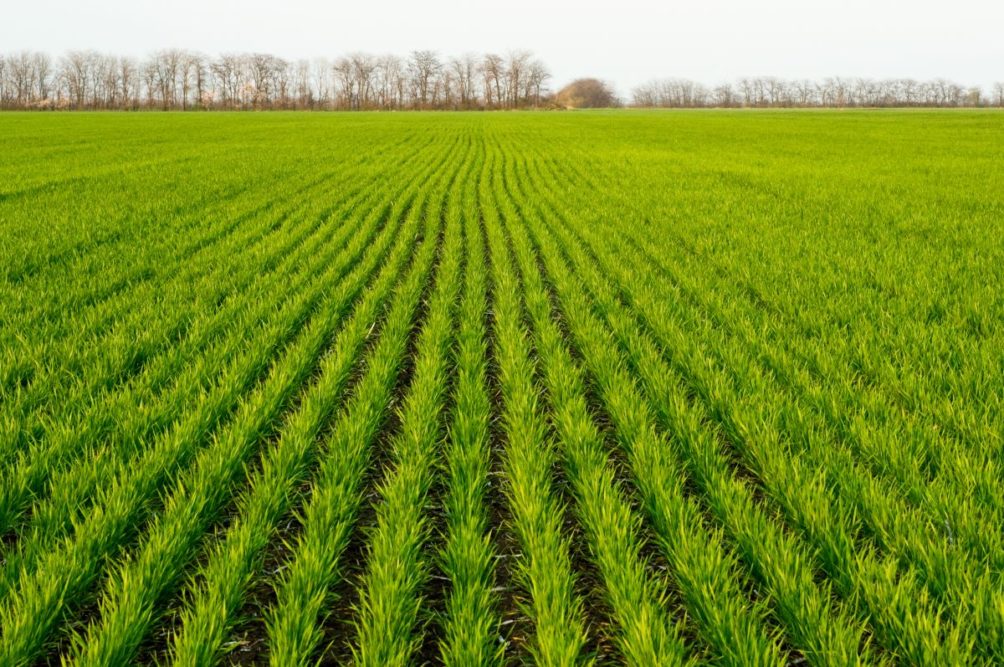KANSAS CITY — A healthy dollop of moisture in early November improved the condition of the hard red winter wheat crop in the drought-challenged central and southern Plains. The latest condition ratings may not reveal the full extent of the improvement, some in the industry said, and more rain is needed to replenish depleted soil moisture profiles.
The US Department of Agriculture in its weekly Crop Progress report Nov. 7 released its second aggregate winter wheat condition ratings for the crop to be harvested in 2023. Nationally, winter wheat in the 18 principal production states as of Nov. 6 was rated 30% good to excellent, 36% fair, and 34% poor to very poor. A week earlier, 28% of the crop was in good to excellent condition. For comparison, 45% of the 2022 crop was in good to excellent condition a year earlier.
Of the primary hard red winter wheat growing states, four showed week-over-week improvement while conditions in three states slipped. The USDA rated the crop as of Nov. 6 in the top production state of Kansas at 42% poor to very poor, 32% fair and 26% good to excellent. For comparison, the Kansas crop a week earlier was rated 42% poor to very poor, 34% fair and 24% good to excellent. Around the horn, good-to-excellent ratings on Nov. 6 were 14% in Oklahoma (11% a week earlier), 14% in Texas (4%), 22% in Colorado (28%), 24% in Nebraska (22%), 26% in South Dakota (29%) and 24% in Montana (33%).
The improvements were precipitated by the first significant shot of rain in the central and southern Plains in the weeks since the crop began to emerge. Weather Underground’s map indicating precipitation levels from Nov. 1 through Nov. 8 covered the entire region with at least ¼-inch of rain, with larger totals in eastern hard red winter growing areas. Eastern Texas, north central and southeastern Oklahoma and the eastern half of Kansas received between 1 and 4 inches, and a few small pockets measured between 4 and 8 inches.
The recency of the rain had some in the industry wondering whether improvements in the crop were yet apparent in the ratings.
“I don’t know if the ratings will show how much better the crop’s gotten,” a veteran trader said. Northwestern Kansas farmers “received good rain just as they put seeds in the ground, and it came up nicely, but they sure better get a little more.”
Indeed, the region isn’t out of the woods yet vis-à-vis drought. The USDA’s Nov. 3 appraisal of the latest US Drought Monitor indicated three-fourths of Kansas was in extreme or exceptional drought. The northeast portion of the state was rated abnormally dry to severe drought. Elsewhere in the Plains, large areas of Oklahoma and Nebraska were in extreme to moderate drought, as were smaller sections of Texas. The rest of the hard red winter states were merely abnormally dry to moderate drought, including eastern Colorado where the past two crops have suffered from a lack of water. Across the country, 74% of winter wheat areas were in drought, per the USDA’s approximation.
More precipitation appeared to be enroute. The National Oceanic and Atmospheric Administration’s 6- to 10-day outlook showed most of Texas, western Oklahoma, southwest Kansas and southeast Colorado all were leaning “above normal” for precipitation with a 40% to 50% chance of rain, and a wider area of those states with a 33% to 40% chance of rain.
Crop conditions were far better and drought conditions relatively minor in the soft winter wheat production Central states. Good-to-excellent winter wheat conditions on Nov. 6 were at 58% in Missouri (56% a week earlier), 34% in Illinois (35%), 67% in Indiana (65%), 51% in Ohio (55%) and 59% in Michigan (53%).
Meanwhile, producers were nearing completion of planting the 2023 crop. In the hard red winter states, planting by Nov. 6 was 93% completed in Kansas, 90% in Oklahoma, 88% in Texas, 99% in Colorado, 100% in Nebraska, 100% in South Dakota and 99% in Montana. For states that primarily grow soft red winter wheat, seeding by the same date was 83% in Missouri, 95% in Illinois, 90% in Indiana, 97% in Ohio and 98% in Michigan.
Winter wheat emergence in the 18 states was 73% by Nov. 6, the same as a year earlier but slightly behind 74% as the 2017-21 average for the date.





